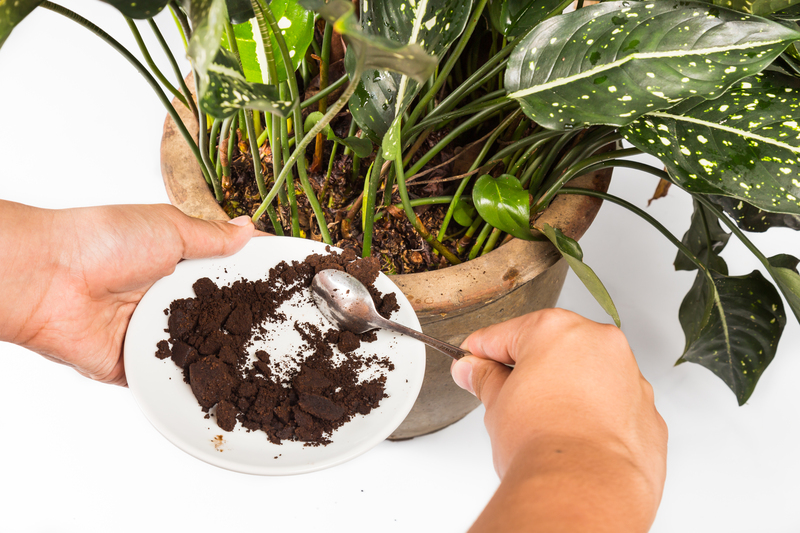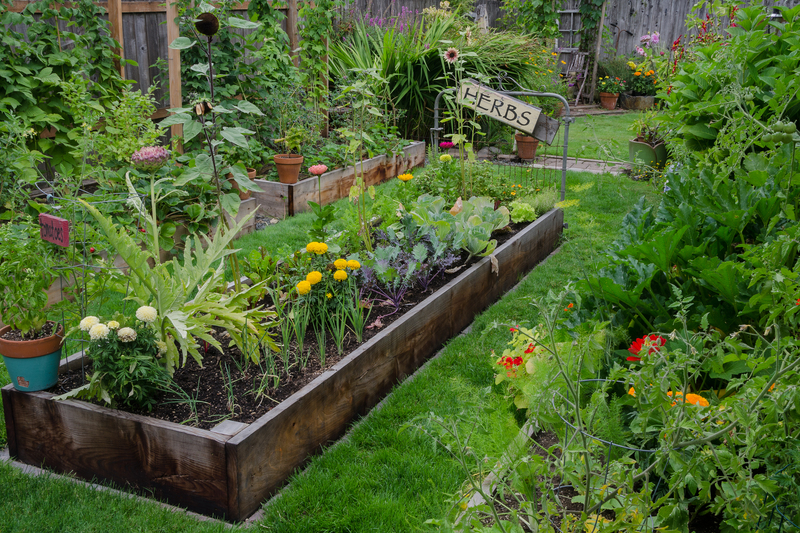Escape the Weed Woes with 3 Expert Tips for Control
Posted on 31/05/2025
Escape the Weed Woes with 3 Expert Tips for Control
If you've ever spent a sunny afternoon plucking pesky weeds from your garden beds or lawn, you know how relentless--and sometimes seemingly impossible--weed control can be. Whether you're a home gardener, a landscaping enthusiast, or someone striving for a lush, weed-free lawn, weed woes can threaten to overrun your outdoor haven. But don't worry! With the right strategy and a bit of expert insight, you can escape the weed woes and reclaim your green spaces.
In this comprehensive guide, we'll unveil 3 expert tips for weed control that blend time-tested methods with expert know-how. By applying these effective approaches, you'll not only prevent weed infestations but also nurture a healthier, more robust landscape. Dive in and discover how to finally put your weed worries to rest!

Understanding Weeds: The Root of the Problem
Before diving into weed control tips, it's essential to understand what makes these intruders so persistent. Weeds are simply unwanted plants that thrive in almost any environment, often outcompeting your chosen flora for water, sunlight, and nutrients. Common types include dandelions, crabgrass, bindweed, clover, and many invasive species that adapt readily to your specific soil conditions.
- Annual weeds: Complete their life cycle within a year. Fast-growing, they reproduce quickly through seeds (e.g., crabgrass).
- Perennial weeds: Live for several years and can sprout from roots, stems, or runners (e.g., dandelions and bindweed).
- Biennial weeds: Require two years to complete their lifecycle, producing seeds in the second year (e.g., wild carrot).
Why are weeds so persistent? Their survival strategies include prolific seed production, deep-rooted growth, and adaptability. Their seeds can lie dormant for years, and even a tiny root fragment left behind can trigger regrowth. That's why effective weed control must target not just what you see, but what lurks beneath the soil.
3 Expert Tips for Effective Weed Control
Ready to banish those weed woes? Here are three proven, expert-endorsed tips to achieve long-lasting weed control in your garden or lawn:
1. Start with Prevention: Mulching and Soil Management
When it comes to escaping weed frustrations, preventing weed seeds from ever germinating is your first line of defense. Mulching is a powerful tool in this arsenal:
- Organic mulches: Materials like wood chips, shredded bark, straw, grass clippings, and compost can suppress weeds naturally. Spread a 2-4 inch layer over soil, ensuring you leave room around the base of plants to prevent rot.
- Inorganic mulches: Landscape fabric and black plastic block sunlight and stop seeds from sprouting. They're ideal for pathways and between rows in vegetable gardens.
Mulch does more than just stifle weeds--it insulates soil, conserves moisture, and feeds beneficial microbes as it breaks down. Plus, mulch makes your beds look neat and professionally maintained!
Soil management is just as valuable. Healthy, dense turf or thick plantings leave little room for weed seeds to settle. Amend soil with compost and organic matter to nurture robust root systems that will outcompete weeds for resources.
2. Master the Timing: Weed Early and Often
Seasoned gardeners know that catching weeds while they're young sets the stage for weed-free success all year long. Here's how you can become an expert in timing:
- Early intervention: Weed seedlings are easiest to remove and haven't yet established deep roots or set seeds. Regularly inspect your beds and yank weeds promptly.
- After rain or watering: Moist soil helps loosen roots, making it easier to pull both annual and perennial weeds completely.
- Routine care: Dedicate a small amount of time each week--rather than marathon sessions--to make weed removal manageable and less daunting.
Don't let weeds flower and produce seeds; one dandelion plant, for example, can launch thousands of seeds in a single season. By breaking the cycle early, you dramatically cut down on future weed woes.
3. Employ Targeted Removal: From Hand Pulling to Innovative Tools
When prevention falls short, targeted weed removal is the next best step. There are several approaches, from traditional hand weeding to cutting-edge tools and selective treatments:
- Hand pulling: For small infestations, this remains the gold standard, especially for annuals and shallow-rooted weeds.
- Hoeing: Use a sharp hoe or cultivating tool to slice weeds just below the soil surface. This is ideal for rows in vegetable gardens or between flowers.
- Weed torches: Flame weeding uses heat to wilt unwanted plants, effective on pathways and gravel beds. Always use with caution and adhere to local fire codes.
- Selective herbicides: If you're dealing with problematic perennials or large infestations, choose a targeted herbicide--be sure to follow label instructions to avoid harming desired plants or polluting the environment.
An innovative trend is using specialized weeding tools that minimize soil disturbance, helping you uproot deep taproots (common in dandelions) or sever rhizomes without excess digging. Look for ergonomically designed hand weeders and long-handled tools that save your back and save time.
Bonus Tips for Long-Term Weed Control
While our expert weed control advice revolves around the top three strategies above, adding a few more habits to your routine can elevate your results and keep those weed woes truly at bay:
Maintain Healthy Lawns and Gardens
- Mow high: Set your lawn mower to a higher setting. Grass that's kept at 3 inches or taller shades the soil and outcompetes most weed seedlings.
- Densely plant beds: Group perennials close together to limit open space for weeds to invade.
- Water wisely: Direct water to the base of plants (drip irrigation is best) instead of broad sprinklers, which encourage weed growth everywhere.
Spot-Treat Problematic Weeds
Persistent weeds like bindweed, horsetail, or thistle may require a focused approach:
- Cultivate only as needed: Tilling can bring new weed seeds to the surface. Limit tillage and disturbance.
- Spot-spray stubborn patches: Use a small applicator to apply herbicide only to the target weed, sparing your desired plants and reducing chemicals overall.
- Manual removal of perennial roots: Dig deep to remove all roots and runners--leaving even a piece can lead to rapid regrowth.
Natural and Organic Solutions for a Sustainable Garden
If you prefer a chemical-free approach to weed control, numerous natural remedies can help you control weeds while keeping your garden safe for kids, pets, and pollinators:
- Vinegar-based sprays: Household vinegar or horticultural vinegar can wilt annual weeds on contact. Use on hot, sunny days for the best results, but be mindful around crops.
- Boiling water: A quick, eco-friendly solution for weeds in pavement cracks or pathways.
- Homemade mulch: Leaves, newspaper, and cardboard can be used to suffocate weeds organically, enhancing soil health in the process.
Treat natural solutions as spot treatments, and never underestimate the lasting power of physical barriers like mulch and landscape fabric to keep your yard free from weed woes over the long haul.
Weed Control Myths to Avoid
Many gardeners fall victim to common weed control myths. Here's what to avoid:
- Myth: "Pulling weeds always works." Reality: For perennials with deep roots, pulling may leave fragments behind. Use appropriate removal methods.
- Myth: "Herbicides are the solution for everything." Reality: Overuse can harm beneficial insects, pollinators, and soil health. Use them sparingly and only when necessary.
- Myth: "A pristine garden means zero weeds." Reality: A few weeds are normal and even beneficial for diversity and wildlife. Focus on control, not complete eradication.

FAQs about Beating the Weed Woes
What is the best time to pull weeds?
Right after rain or watering is ideal because soil is loose, making roots easier to extract. Regularly inspect gardens for early intervention--weekly "weeding walks" are highly effective.
Are there non-toxic alternatives to herbicides?
Yes! Mulching, hand pulling, boiling water, vinegar sprays, and dense planting are all excellent chemical-free methods for controlling weeds.
How can I prevent weeds from reappearing?
Continuous mulching, maintaining thick plantings, mowing lawns high, and regular monitoring are key. Always remove weeds before they bloom and set seed.
Should I use landscape fabric?
For long-term weed suppression in paths and flower beds, landscape fabric beneath mulch can be very effective. Be sure to cut holes only where plants are installed to keep weeds from sneaking through exposed soil.
Your Weed-Free Oasis Awaits
Escaping the weed woes might seem daunting, but armed with these 3 expert tips for weed control--along with new habits and natural strategies--you're well on your way to a lush, flourishing, and low-maintenance landscape. Remember to prioritize prevention through mulching and healthy soil, act early and often with weeding, and remove weeds efficiently and precisely.
Take action this season, and let your garden reflect your commitment to beauty and sustainability--without the persistent annoyance of weed invasions!
- Mulch and manage soil for prevention
- Weed early and regularly
- Remove weeds with the right tools and methods
With these powerful steps, you can confidently escape the weed woes for good!

